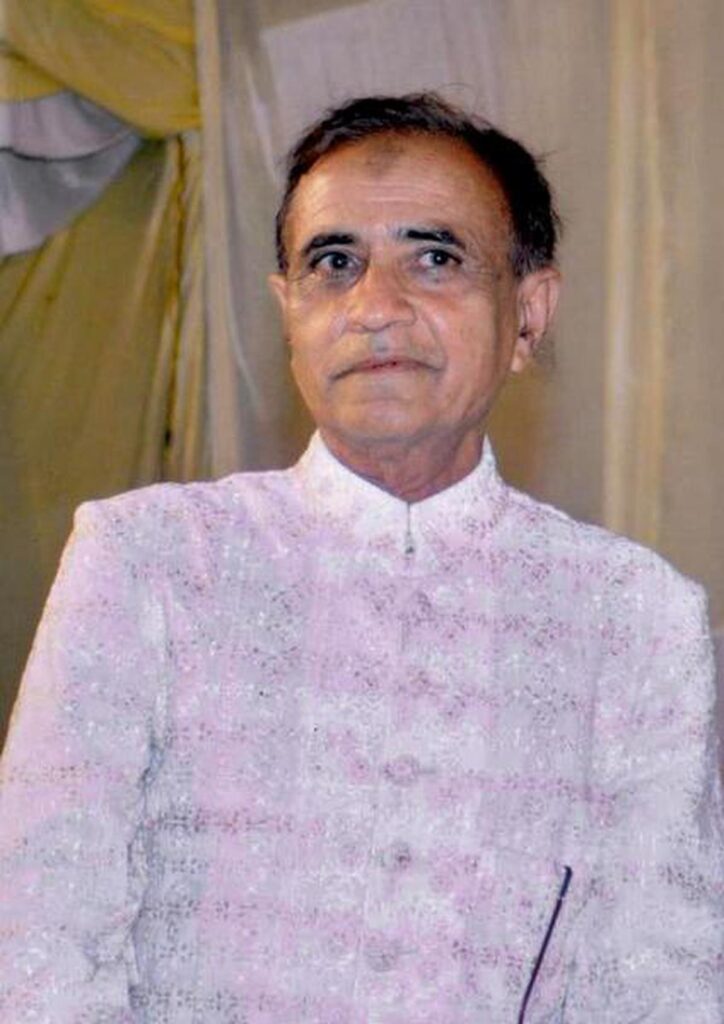Kakorvi / Lucknow, UTTAR PRADESH :
In “Neela Chand”, Sohail Kakorvi creates an interesting poetic exposition through an interplay of proverbs and idioms

A deeply felt experience can not be poignantly recorded in individual words and its intriguing and tantalising communication call for a new narrative. Proverbs far from being arbitrary, predictable and dead metaphors create a pulsating rhetoric that ignites a myriad of images for capturing universal truths and takes us on a new terrain of cultural space, if one is ready to occupy it. Proverbs and idioms subvert the logic of composition which simply means that whole should be constructed from the meaning of the part. These commonly articulated expressions are certainly more than playful word puzzles and this is what eminent Urdu poet Sohail Kakorvi’s new astutely composed long poem “Neela Chand” articulates.
Urdu poets do use one or two proverbs in a ghazal but no one has attempted to compose an exceptionally long ghazal carrying more than nearly 300 aashar (couplets) revolving around proverbs. For Sohail proverb is an essential template to create a fusion of thoughts that also produces an interface between world of desire and the contemporary digital world. Proverbs are invested with the tremendous possibility of capturing moments of epiphany and diffidence with equal vehemence. Relationship between proverb and its meaning is expressed in terms of motivation with remarkable ease. Live by one’s wit (Harf Ka Bana Hona) and unable to move because of mehndi put around feet (Paun mein mehndi lagana) are the two most frequently used proverbs and Sohail explores an eerie relationship between them.
“Wo Harfon Ka Bana Hai Uski Bato Par No Tum Jana
Sune Jao Ki Usne Pau Mein Mehdi Lagai Hai”
(Never believe the who lives by his wit. Keep on listening that she applied paste of mehndi around her. The poet is fully aware of deceit but he is quite eager to go by it.)
In three languages
The long poem titled “Neela Chand” is composed in three languages – Urdu, Hindi and English and a sher (couplet) and its translation in Hindi and English form one page of the book. The collection reveals Sohail’s penchant for translating the untranslatable – proverb and idioms – they are essentially embedded in the culture of a particular language representing different cultures and they can not be made intangible in other languages. Still there are several proverbs that betray close similarity both at literal and metaphorical levels. A well-known Urdu proverb “Ulte Bans Bareilly Ko” has an identical idiom in English “Carry Coal to New Castle” but Sohail does not look for such easily available similar expressions, he searches for commonalities of human existence expressed through language instead
At a time when frequent use of proverbs is considered as a down right decadent practice, the poet makes it a point to explore the creative potential that lie inside the proverb. Sohail tries to create gleaming cultural iconography through varied verbal images that unfailingly pops up and add on often forgotten dimension of a common place experience:
“Udhar Usne Kahe Tairah Liye Hain Nau Naqad Maine/Munasib Faisla Mera Tha, Masti Uspe Chhai Hai” (She preferred two in bush I choose one bird in hand/ Mine was appropriate decision that left her excited)
The name of the book, compiled by Ashar Alig, seems quite suggestive. The title ‘Neela Chand’ instantly reminds us about English expression “Blue Moon” but here it does not refer to something that occurs rarely and for poet Neela Chand stands for trust, intelligence and confidence. Sohail adds colour blue to moon to make it a metaphor of human dignity and the loss of individual identity which is both tantalising and exasperating.
Seldom does one came across with such an excellent poetic exposition of proverbs and it is a good read for all those enjoy poetry even at a time when violence and hatred has out balanced us completely.
source: http://www.thehindu.com / The Hindu / Home> Books> Going Native / by Shafey Kidwai / March 04th, 2017








